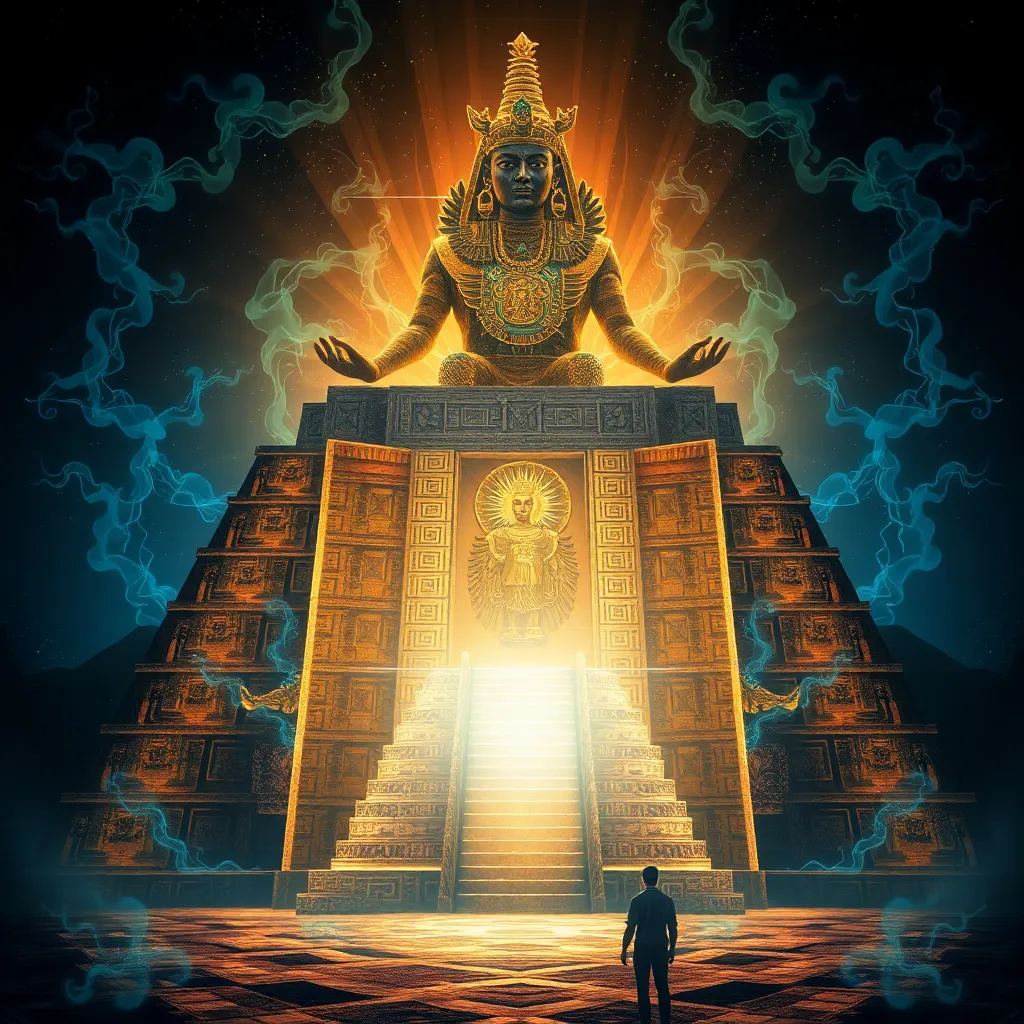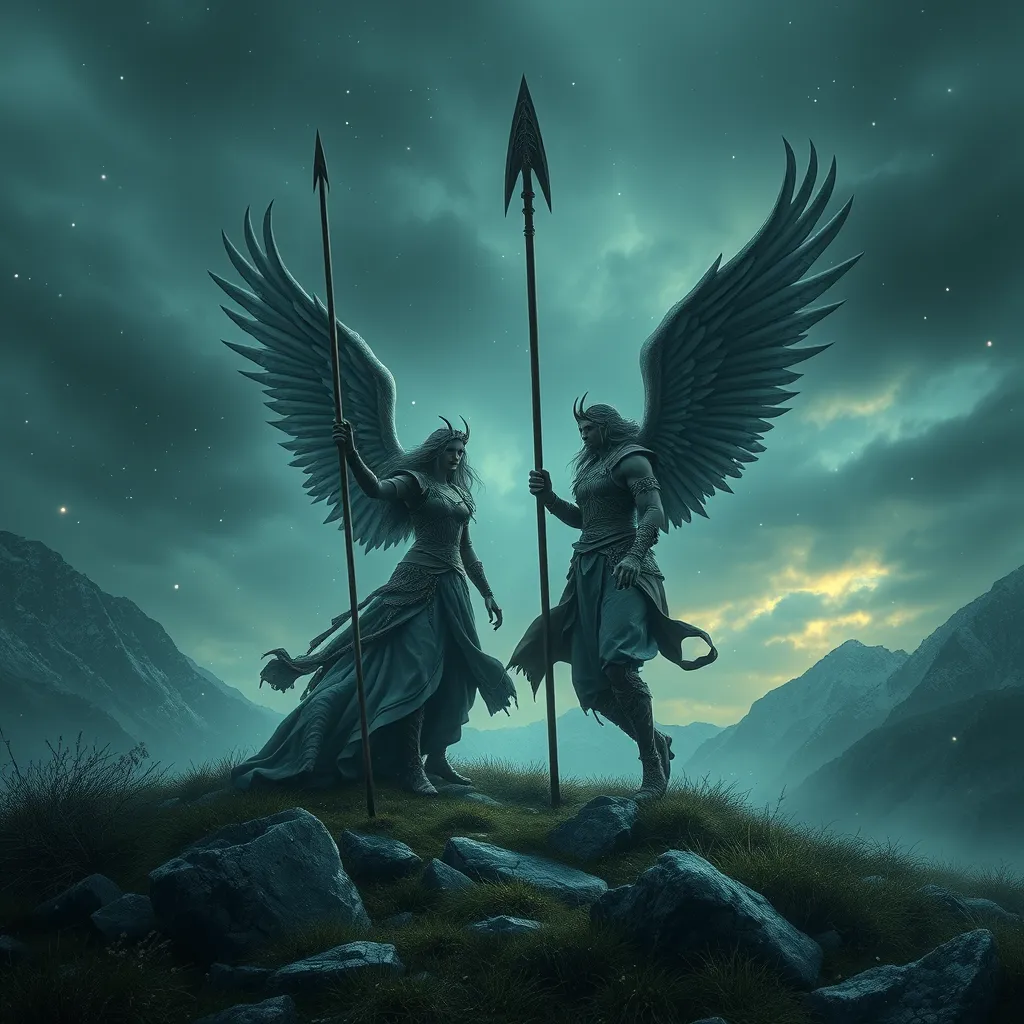Itzamná: The Mayan Creator God – Unveiling the Cosmic Architect
I. Introduction
Itzamná, a pivotal figure in Mayan mythology, is revered as the creator god and a significant deity within the ancient Mayan pantheon. His importance transcends mere representation; he embodies the principles of creation, wisdom, and the cosmic order. This article aims to delve into Itzamná’s multifaceted role as the cosmic architect, exploring his influence on Mayan culture, religion, and the modern understanding of this ancient civilization.
II. Historical Context of Mayan Religion
The Mayan civilization, known for its profound astronomical knowledge and intricate societal structures, was deeply rooted in spirituality and religious practices. Religion played a crucial role in daily life, influencing everything from agriculture to governance.
A. The importance of religion in Mayan society
Mayan religion was not merely a set of beliefs; it was an integral part of their identity. Rituals, ceremonies, and offerings were essential to appease the gods and ensure harmony in the universe. The cyclical nature of their calendar reflected their understanding of time as a sacred continuum influenced by divine powers.
B. Overview of major deities in the Mayan pantheon
The Mayan pantheon consists of numerous deities, each representing various aspects of life and nature. Key figures include:
- Chaac – the rain god, vital for agriculture.
- Kukulkan – the feathered serpent, symbolizing the duality of existence.
- Xibalba – the underworld, governed by numerous deities associated with death and the afterlife.
C. Itzamná’s position within the hierarchy of gods
As a creator god, Itzamná occupies a high position in the Mayan hierarchy of deities. He is often associated with the sky and is considered the father of other gods, including the sun god and the moon goddess. His wisdom and creative powers are central to the Mayan understanding of the universe.
III. The Attributes of Itzamná
Itzamná is characterized by various attributes that highlight his significance within Mayan belief systems.
A. Symbolism and representations of Itzamná
Itzamná is typically depicted as an old man with a large forehead, symbolizing wisdom and knowledge. He is often shown holding a staff or a mirror, indicating his role as a guide and a source of illumination.
B. The dual nature of Itzamná: Creator and Destroyer
Itzamná embodies a duality that reflects the complexities of existence. As a creator, he brings forth life and order; as a destroyer, he reminds humanity of the impermanence of all things.
C. Associated elements: light, wisdom, and healing
Light is a significant element associated with Itzamná, symbolizing enlightenment and knowledge. He is also linked to healing practices, emphasizing the intertwining of physical and spiritual well-being.
IV. Itzamná in Mayan Creation Myths
Central to Mayan mythology is the Popol Vuh, a sacred text that details the creation of the world and humanity.
A. Overview of the Popol Vuh and Itzamná’s role
In the Popol Vuh, Itzamná plays a crucial role in the creation narrative, guiding the other gods in shaping the world and humanity. His wisdom is paramount in the decisions made during the creation process.
B. The creation of humanity and the role of maize
The creation of humans is intricately linked to maize, a staple crop for the Maya. Itzamná and other gods attempted to create humans from various materials, ultimately succeeding with maize, which symbolizes life and sustenance.
C. Itzamná’s interactions with other deities in creation narratives
Throughout the Popol Vuh, Itzamná collaborates with other deities, such as Tepeu and Gucumatz, highlighting the cooperative nature of creation in Mayan mythology. Their collective efforts emphasize the interconnectedness of all life forms.
V. Temples and Worship Practices
Worship of Itzamná took many forms, reflecting the deep reverence the Maya had for this creator god.
A. Sacred sites dedicated to Itzamná
Temples and ceremonial sites dedicated to Itzamná can be found throughout the Yucatán Peninsula. Notable sites include:
- Tikal – home to impressive pyramids and temples.
- Palenque – renowned for its intricate architecture and carvings.
- Chichen Itza – a major center of worship and pilgrimage.
B. Rituals and offerings in honor of Itzamná
Rituals often involved offerings of food, incense, and bloodletting, aimed at securing Itzamná’s favor. Ceremonies were performed by priests during significant astronomical events.
C. The role of priests and shamans in worship
Priests and shamans acted as intermediaries between the gods and the people, conducting rituals and interpreting divine messages. Their knowledge of the sacred texts and rituals was vital for maintaining the spiritual health of the community.
VI. Itzamná’s Influence on Mayan Culture
Itzamná’s presence permeated various aspects of Mayan culture, from art to social practices.
A. Itzamná’s impact on art and architecture
Artworks often depicted Itzamná alongside other deities, showcasing his significance. Temples and monuments were built with intricate carvings that narrated his myths and attributes.
B. The god’s presence in literature and oral traditions
Itzamná features prominently in oral traditions, with stories passed down through generations, highlighting his role in creation and the moral lessons derived from his narratives.
C. Festivals and ceremonies celebrating Itzamná
Annual festivals were held in honor of Itzamná, celebrating agricultural cycles and the divine order. These events fostered community cohesion and reaffirmed cultural identity.
VII. The Legacy of Itzamná in Modern Times
Itzamná’s influence extends beyond ancient times, remaining relevant in contemporary Mayan spirituality.
A. Itzamná in contemporary Mayan spirituality
Many modern Maya continue to honor Itzamná, integrating traditional beliefs with contemporary practices. His symbolism endures in rituals that celebrate life and nature.
B. The importance of preserving Mayan heritage
Efforts to preserve Mayan heritage, including its languages, traditions, and beliefs, are crucial for maintaining cultural identity. Itzamná serves as a reminder of the rich spiritual history of the Maya.
C. Itzamná’s influence on modern interpretations of Mayan culture
Contemporary interpretations of Mayan culture often reference Itzamná, recognizing his role as a symbol of creation and wisdom. This acknowledgment fosters a deeper appreciation for Mayan philosophy and its relevance today.
VIII. Conclusion
In summary, Itzamná stands as a monumental figure in Mayan mythology, embodying the cosmic architect responsible for creation and order. His influence permeates various aspects of Mayan culture, from religion to art, while his legacy continues to resonate in modern spiritual practices. Understanding Itzamná enriches our comprehension of Mayan philosophy and highlights the enduring relevance of ancient deities in contemporary society. As we explore the intricacies of Mayan beliefs, Itzamná reminds us of the profound interconnectedness of life and the cosmos.




